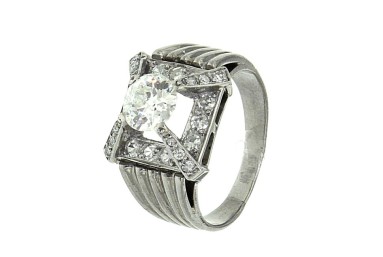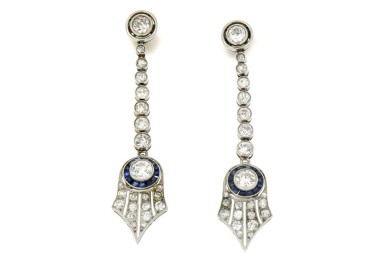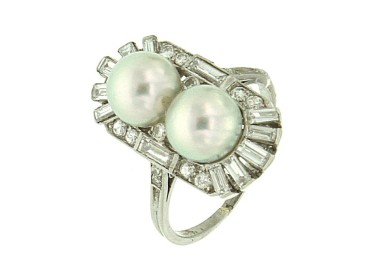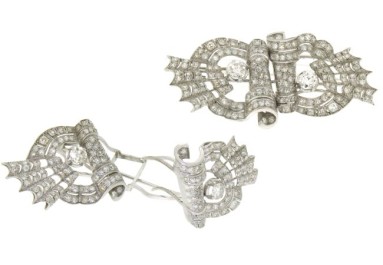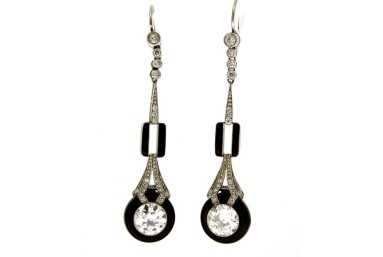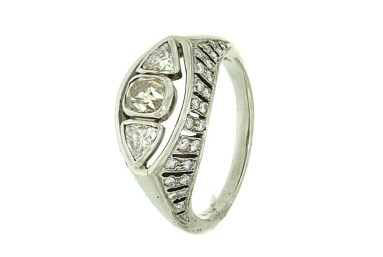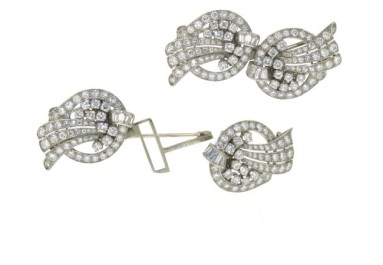Around the years 1925, between the first and second world wars, the art deco style emerged – a name coined after the exhibition of the Decorative Arts in Paris. This defines the style that combines the simplified, stylized and geometric lines synthesis of various stylistic influences including the Cubist style, the Viennese Secession, the “ballets russes” of S. Djaghilev, the influence of technology and functionalism of the Bauhaus creating light, flat, angular jewels, suitable for the fashion of short skirts, mop hair and slender women.
In the mid-1920s, the fashion of black and white emerged and, therefore, the frequent use of black onyx and, in metal, of platinum.
An unusual material is used by the goldsmith of the Bauhaus Naum Slutzky who worked in addition to silver also chromed brass. In the setting sector in 1935 a novelty was introduced by Van Cleef & Arples who created invisible settings to create a mosaic effect with stones.

